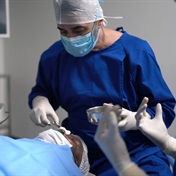The chances of becoming nearsighted may be at least partly determined very early in life, new study findings show.
Given that some of these early life factors - such as more older mothers giving birth and better survival of relatively tiny babies - tend to be on the rise in many regions of the world, their association with nearsightedness may partly explain why the eye condition is also on the rise, the research team suggested in their report, published in Ophthalmology.
For instance, rates of myopia are rising most rapidly among East Asians - up to 80% of whom are myopic.
The findings
The findings suggest that the seeds of nearsightedness may be planted earlier than many have believed, study author Dr Jugnoo Rahi at the University College London said. "Even factors acting during pregnancy can influence the risk of myopia," Dr Rahi said.
To investigate links between early life factors and a person's risk of myopia, Dr Rahi and colleagues reviewed data collected from 2,487 members of the 1958 British Birth Cohort - including 1214 individuals (49%) who developed myopia.
It turned out that adults whose mothers were at least 35 when they gave birth were 50% more likely to be nearsighted. If they were relatively tiny babies, that was also associated with a slightly higher risk of myopia. If their mothers smoked during early pregnancy, the offspring's risk of severe myopia - a relatively rare form of the condition - doubled.
Childhood factors
Looking at childhood factors, the authors found that seven-year-olds who scored highly on reading tests - suggesting they spent more time reading and studying - were 20% more likely to eventually develop myopia. Similarly, adults who went to college and held non-manual jobs were between 20% and 40% more likely to become nearsighted.
Dr Rahi believes that "the rise in frequency of myopia can only really be explained by changing environmental factors," since genetic predispositions couldn't increase so dramatically. These environmental risk factors may directly influence eyesight, or do so indirectly, by acting on pathways mediated by genes. (Reuters Health/ January 2011)
Read more:
Makeup tips for eyes
Keep an eye on kid's vision
Better vision after 40




 Publications
Publications
 Partners
Partners










